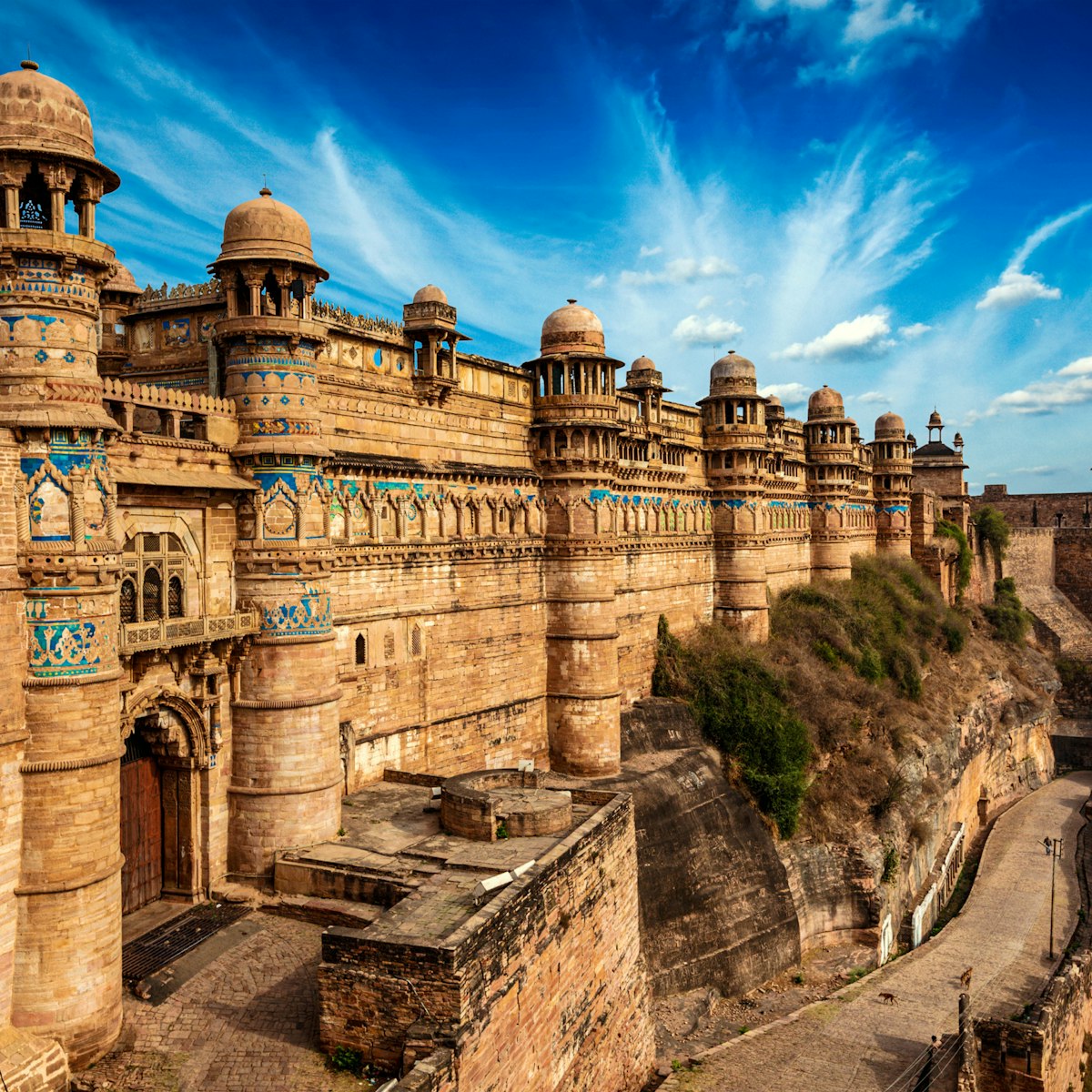This imperial-style palace, built by Tomar ruler Man Singh between 1486 and 1516, is definitely one of India's more quirkily decorated monuments: its colourful exterior tilework includes a frieze of yellow ducks and mosaics of elephants, crocodiles and tigers in blue, yellow and green! Hence its alternative identity of Chit Mandir (Painted Palace). Man Singh, a connoisseur of the arts, would surely be delighted to know that his creation is now considered the only intact pre-Mughal palace in India.
It's a labyrinth of a building on four levels. Two circular, columned halls on the lower levels were designed for hot weather and connected by ‘speaking tubes’ built into the walls – and later used by the Mughals as cells for high-ranking prisoners. Some of the darker passageways are now full of roosting bats!
The ticket counter is opposite the palace. You can also hire official guides here for ₹470 for up to four hours. To the north are the ruins of the Vikram Mahal, Karan Mahal and other dilapidated palaces in the north of the fort, grouped under the name State Protected Monuments. Just south is the small Archaeological Survey of India museum, housing a ho-hum collection of Gwalior-area antiquities.
Ticket also covers admission to Sasbahu Temples and Teli ka Mandir.

